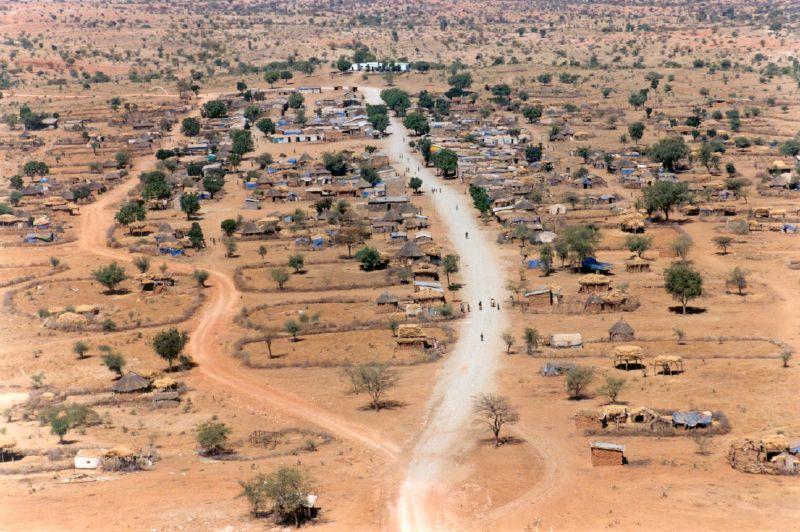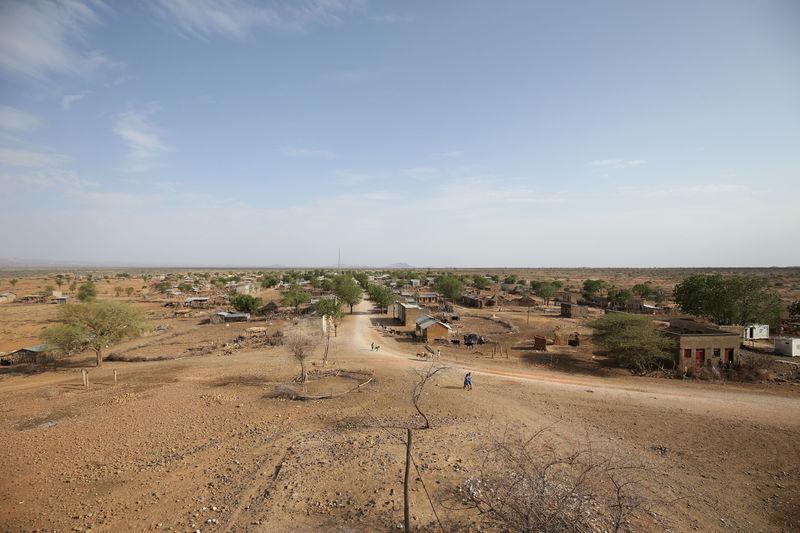Overview:
1. The basic cause of the border dispute
2. The story behind the ‘protests’ in ‘Badme and its environs’
3. Pursuing a hidden agenda by sowing confusion and obfuscation
4. The dilemma behind Isaias’ silence
5. The way forward to stable peace
1. The basic cause of the border dispute
The border between Eritrea and Ethiopia was delimited by three colonial treaties (1900, 1902 and 1908), making use of explicit natural and geometric references to define the central, western and eastern sectors of the boundary. Thus delimited, the border remained stable during Italian colonial rule (1890-1941), British military occupation (1941-1952), federation with Ethiopia (1952-1962), and Ethiopian annexation (1962-1991). It retained its de jure and de facto international status for an entire century. It was only in 1997 that the Tigray regional administration produced, with the assistance of the German Technical Cooperation Agency (GTZ, now GIZ), a map of Tigray Administrative Zone (Weyin (ወይን), 1997)[1] which unilaterally redrew the historical colonial treaty border between Eritrea and Ethiopia, incorporating large swathes of hitherto uncontested sovereign Eritrean territory (click here for more info). Incidentally, this new map of an expanded Tigray also incorporated large areas from the adjacent Ethiopian regions of Begemdir (በገምድር) and Wello (ወሎ), issues that have recently triggered protests in Welkait (ወልቃይት) and Raya (ራያ).
The map, replicated in the new map of Ethiopia issued by the Ethiopian Mapping Authority and embossed in the new Ethiopian currency, altered Eritrea’s international boundary with Ethiopia for the first time in a century (Splinter, 1998, 245-272). Following its issuance, the map served as a blueprint to encroach on the hitherto uncontested swathes of sovereign Eritrean territory, dismantle Eritrean administrative structures, expel Eritrean citizens and establish Tigrayan administrative authority over the newly incorporated swathes of Eritrean territory.
This led to the displacement of people in the affected frontier regions and the destabilisation of the borderlands. Inability to defuse the resultant tension and resolve the issue through bilateral consultations or negotiation eventually prompted the outbreak of hostilities between Eritrea and Ethiopia and led to all-out war. As international mediation efforts by friendly third parties (US, US-Rwanda, Djibouti, OAU) were unable to stem the rising tide of hostilities, the two neighbours fought an unnecessary, avoidable and enormously destructive war (1998-2000).
2. The story behind the ‘protests’ in ‘Badme and its environs’
The ‘protest’ demonstrations in ‘Badme and its environs’ do not tell the true story. They are most probably instigated by advocates of Greater Tigray. ‘Badme and its environs’ is a term first coined by Ethiopia to denote all the Eritrean territories it laid claim to. We should recall the mass deportations of Eritreans from Ethiopia which then PM Meles Zenawi justified by stating that “Any foreigner, whether Eritrean, Japanese, etc., lives in Ethiopia because of the goodwill of the Ethiopian government. If the Ethiopian government says ‘Go, because we don’t like the colour of your eyes,’ they have to leave” (ETV, 9 July 1998). During the war, the TPLF-dominated government of Ethiopia carried out the mass deportation of over 75,000 Eritreans from Ethiopia. Eritreans from ‘Badme and its environs’, who were forced to either convert to Ethiopian nationality or be expelled, were among the over 75,000 Eritrean deportees evicted and their properties confiscated.
After the EEBC’s delimitation decision of 13 April 2002, the government of the regional state of Tigray brought people from different parts of Tigray and started settling them in these now occupied Eritrean territories of ‘Badme and its environs’ as of July 2002. The same TPLF-dominated Ethiopian government defied the EEBC: Order of the Commission to dismantle and halt illegal settlements stating that:
B. Any Ethiopian government-sponsored resettlement of Ethiopian nationals in Dembe Mengul after 13 April 2002 should not have taken place;
C: Ethiopia shall:
(i) forthwith arrange for the return to Ethiopian territory of those persons in Dembe Mengul who have gone there from Ethiopia pursuant to an Ethiopian resettlement program since 13 April 2002; […]
D. Each Party shall ensure that no further population resettlement takes place across the delimitation line established by the Decision of 13 April 2002.
(EEBC Delimitation of the Border (Eritrea-Ethiopia): Order of the Commission (made pursuant to Article 20 and Article 27(1) of the Commission’s Rules of Procedure)
As well as the United Nations Security Council Resolution that:
7. Calls on the parties to refrain from unilateral troop or population movements, including establishment of any new settlements in areas near the border, until demarcation and orderly transfer of territorial control has been accomplished, in accordance with article 4.16 of the Comprehensive Peace Agreement [Algiers Agreement]; - UNSC Resolution 1430 (2002)
When Ethiopia continued to ignore the Order of the Commission, the EEBC reiterated that, “the Delimitation of 13 April 2002 is final and binding in respect of the whole of the boundary between the Parties” Further, it ruled that:
“Ethiopia, in failing to remove from Eritrean territory persons of Ethiopian origin who have moved into that territory subsequent to the date of the Delimitation Decision, has not complied with its obligations.” (EEBC: Determinations, 7 November 2002)
It’s thus imperative to view these apparently orchestrated ‘protests’ in ‘Badme and its environs’ in the context of the illegal settlements established after the EEBC’s delimitation decision. For most of the present inhabitants are Tigrayan settlers brought after the Eritreans were forced to either convert to Ethiopian nationality or deported from their original villages.
Pursuant to the EPRDF Executive Committee’s decision to accept and unconditionally implement the EEBC’s final and binding decision, the Ethiopian government must now find a resolution to the consequences of the deportations and the Tigray Regional State’s illegal settlements to enable the physical demarcation of the boundary and restore peaceful relations between Eritrea and Ethiopia.
3. Pursuing a hidden agenda by sowing confusion and obfuscation
Statements and communications from prominent former and current TPLF officials, the Tigrayan media and social media chatter (and certain misguided Eritrean online media) have been conveniently omitting, distorting or misrepresenting the facts that have unfolded on the ground in the Eritrea-Ethiopia borderlands since 1997.
This is designed for purpose to confuse and obfuscate the real issues in question in order to obstruct the new prime minister’s bold initiative to restore stable peace by implementing the EEBC’s decision. It is high time to abandon the pursuit of expansionist ambitions at the expense of the paramount interests of the Eritrean and Ethiopian peoples as well as regional peace, security and stability.
4. The dilemma behind Isaias’ silence
Isaias has used the state of no peace, no war as a pretext not to implement the 1997 ratified constitution or hold national elections. He has also used it to justify indefinite active national service despite its limited duration of 18 months clearly specified in the 1995 Proclamation (click here for more info). Under the guise of national security, Isaias has used the state of no peace, no war to personalise state power and perpetrate the state of brutal repression and miserable human condition afflicting the Eritrean people under his rule. The new Ethiopian prime minister’s declaration of acceptance and unconditional implementation of the EEBC’s demarcation decision must thus have caught him by surprise.
Removing this state of no peace, no war denies him the pretext of national security and puts Isaias in a dilemma – either way, it could be the beginning of the end of the unravelling of his dictatorship. The fact that he is unable or unwilling to respond in kind is likely a reflection of that concern.
On several occasions, I have stated to Ethiopian officials that if Ethiopia were to implement the Algiers Agreement and withdraw its forces from sovereign Eritrean territories, it would pull the rug from under Isaias’ feet. Given the evolution of the historical dynamics now coming into play, it seems that the regime has manoeuvred itself into a corner and Isaias is facing a dilemma: damned if he does, damned if he doesn’t!
He is probably afraid that either way would spell his undoing. He is facing a dilemma, because that could be the beginning of the end of his regime. With an end to the state of no war, no peace in sight, there would be no excuse for business as usual for the regime. Eritrea has hundreds of thousands of troops in the trenches and there will be no justification to keep them at the Eritrea-Ethiopia border. Isaias has destroyed the Eritrean economy, which is too weak and too fragile to accommodate their demobilisation and desirable absorption into civilian life.
Given the immense distrust generated by the history of Ethiopia’s repeated turnabouts and constantly shifting positions regarding the EEBC’s final and binding delimitation and demarcation decisions, seeing would be believing for Eritreans. Eritreans are therefore waiting for Ethiopia to walk the talk and follow its announcement with concrete action.
Otherwise, there is no doubt that the people of Eritrea, the Eritrean Defence Forces and most senior Eritrean officials are rejoicing at the prospect of stable peace and the prospects of a long-denied better life of freedom, democracy and prosperity now within reach.
5. The way forward to stable peace
Given real political will, the way forward is simple and straight. Full acceptance and unconditional implementation should mean immediate withdrawal of Ethiopian forces from sovereign Eritrean territory as per the EEBC’s virtual demarcation, the dismantling of Tigrayan settlements established on sovereign Eritrean territory since July 2002 and enabling the return of the evicted Eritreans to their original villages around ‘Badme and its environs’. This would pave the way for bilateral dialogue to resolve all outstanding issues arising from the boundary conflict and restore normal relations between Eritrea and Ethiopia.
--------------
[1] Weyin (ወይን), official organ of the Tigray People’s Liberation Front (TPLF).



